Mardi Gras was historically socially and racially segregated. Black Americans formed the Zulu Krewe to become a part of the celebration.
Yoonji Han

- The history of Mardi Gras in America is rooted in social and racial segregation.
- Krewes were formed as a way to reinforce existing hierarchies in Louisiana society.
The first American Mardi Gras took place in the 17th century in Louisiana, which was then a slave-holding colony
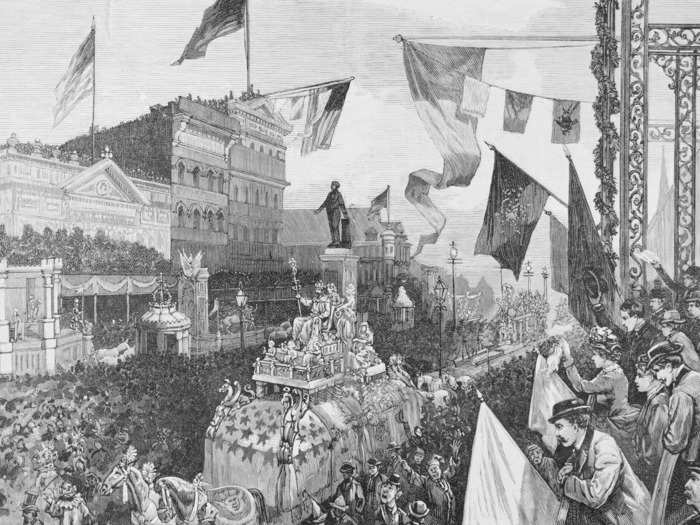
Mardi Gras has been celebrated in some form in Louisiana since it was first colonized by the French in the 17th century.
The first American Mardi Gras took place on March 3, 1699, when two French explorers landed near present-day New Orleans to establish a colony. They held a small celebration and dubbed their new settlement the Point du Mardi Gras.
Native Americans were originally enslaved in Louisiana. Shortly after, enslaved Africans were brought to America during the transatlantic slave trade.
The first Mardi Gras krewes were invested in reinforcing the social hierarchy of Louisiana society
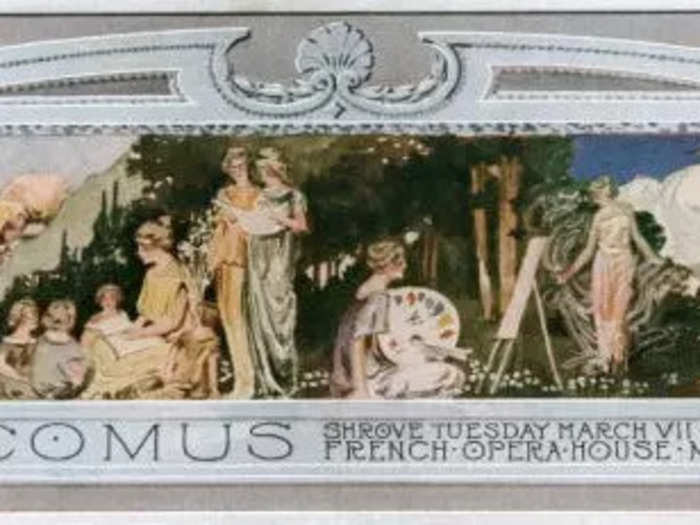
Krewes are social organizations that stage parades and balls during the Carnival season.
The Mistick Krewe of Comus was founded in 1857, and was one of the first Mardi Gras krewes formed in America. It was largely made up of white Anglo-American men, as well as some white Creole men. White women, Black people, Jews, and German and Italian immigrants were all excluded from krewe membership.
Krewes emphasized royal imagery through practices like crowning kings and queens, which were otherwise out of favor in the United States at the time. The formation of krewes was connected with nostalgia and anxiety over the waning power of the Southern planter class around the Civil War and the abolition of slavery — and was a way to reinforce a social hierarchy where elite white men sat at the top, according to historian Jennifer Atkins.
Early parade themes reflected the white elite's fear and desire to hold onto power
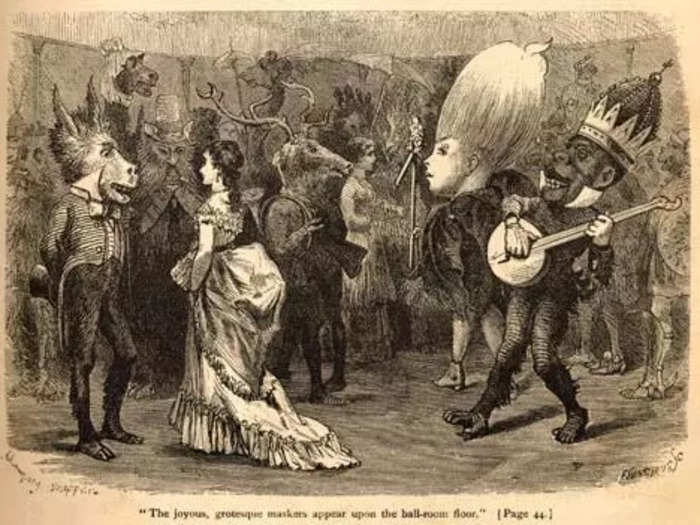
In 1873, the Mistick Krewe of Comus' parade theme was "Missing Links to Darwin's Origin of Species." The costumes and floats were designed to stir up opposition to the passage of the Fourteenth and Fifteenth Amendments, which guaranteed Black Americans equal protection under the law and the right to vote.
Costume designs from the parade showed anthropomorphized gorillas wearing feathered hats and playing musical instruments. A journalist at the Daily Picayune at the time compared the gorilla costume to "the broader-mouthed varieties of our own citizens, so Ethiopian in his exuberant glee."
The parade was a way for white elite to assuage unfounded fears toward the threat of Black masculinity, according to historian Elizabeth Leavitt.
"The gorilla costumed figure exoticized this perceived threat in the minds of all who saw it during the Comus parade; the idea that the silly-looking, primitive, banjo-playing gorilla would ever be a threat to a Southern Belle, like Mardi Gras Queen Winnie Davis, would have seemed impossible," Leavitt said.
Excluded from krewes, Black men and women were often used as labor during the parades
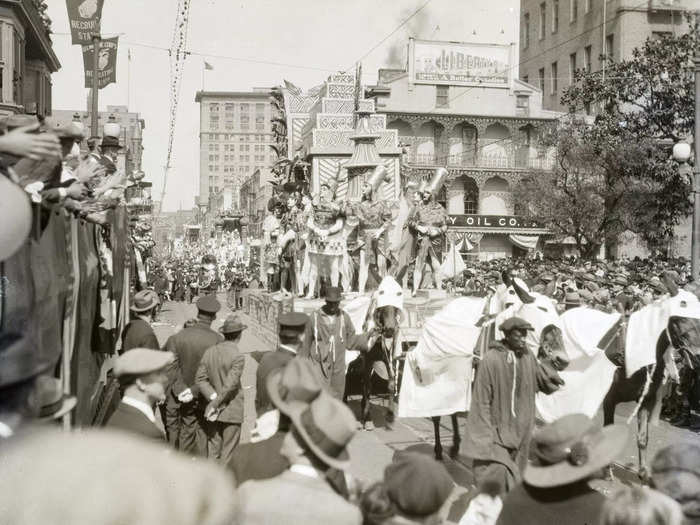
Many of the "flambeaux," or lantern bearers, in parades were Black men who had been recently freed in the decades following the Civil War. These performers had to walk between elaborately decorated floats on foot while twirling open-flame kerosene torches in the air. They held the torches so that parade-watchers could see the floats.
First-hand accounts from the late 19th century also described how the floats were pulled by mules, led by Black men.
The Zulu krewe emerged in response to discrimination and exclusion
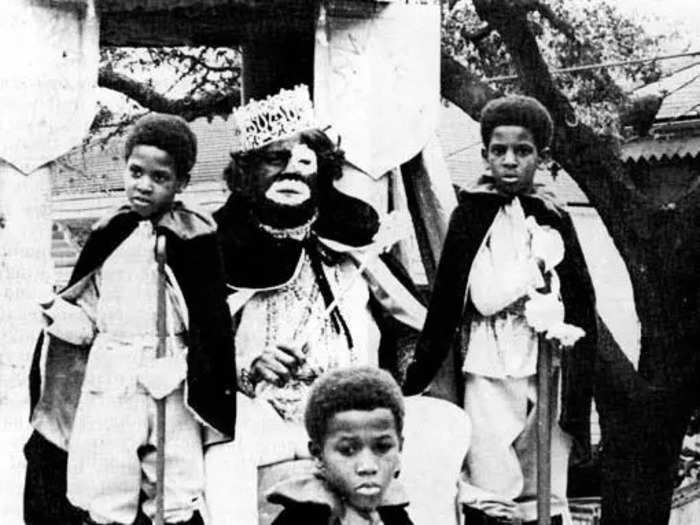
In 1909, the Krewe of Zulu made its first public appearance on parade routes — the first of many for what would become one of the most recognizable Black krewes in New Orleans.
Formally known as the Zulu Social Aid and Pleasure Club, the Zulu krewe used balls, parties, and social events to raise money for Black Americans suffering financial hardships.
Drawing from the Zulu people in Africa, the krewe members wore grass skirts, blackface, and bushy hair or ornate headgear. The stereotypical costuming was purportedly a subversive gesture to caricatures of Black identity, including minstrelry, while simultaneously embracing their ancestral roots, according to scholar Trimiko Melancon.
"Zulu and other Black krewes created and offered a space of belonging during the racial politics of the era," Melancon wrote on Black Perspectives, the blog for the African American Intellectual History Society.
Mardi Gras krewes were not desegregated until 1992
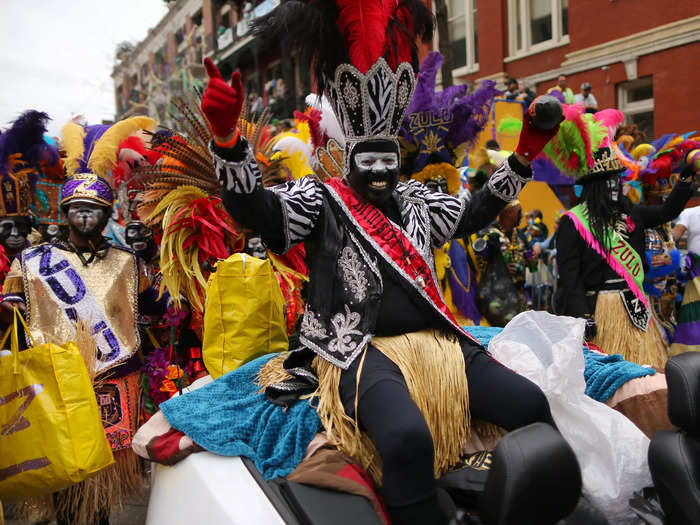
In December of 1991, New Orleans City Council voted to desegregate Mardi Gras krewes, which had remained largely white with the exception of a few Black krewes, including the Zulu club.
The Mardi Gras Indians commemorate the shared oppression of African Americans and Native Americans
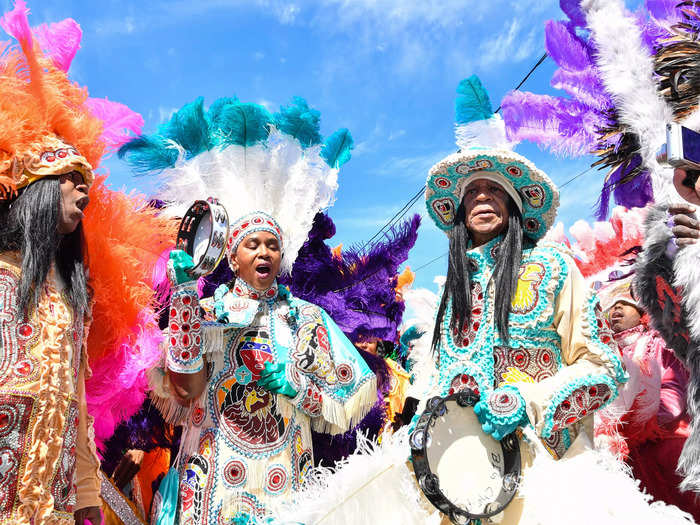
The Mardi Gras Indian tribes also emerged as an alternative to the royal-centric krewes that communities of color were historically excluded from.
Despite its name, the Mardi Gras Indians are comprised of African Americans in New Orleans. They wear elaborate costumes that honor both African and Native American ancestry as a way to commemorate their shared oppression. It is widely believed that Native Americans aided Africans who escaped slavery,
The Mardi Gras Indians embody the Black masking traditions that arose in defiance against laws that banned African Americans from celebrating in parades. The costumes, adorned with beads, feathers, and sequins, take months to complete, and can cost thousands of dollars in material alone.
The Skull & Bone Gang carries a tradition rooted in African spirituality
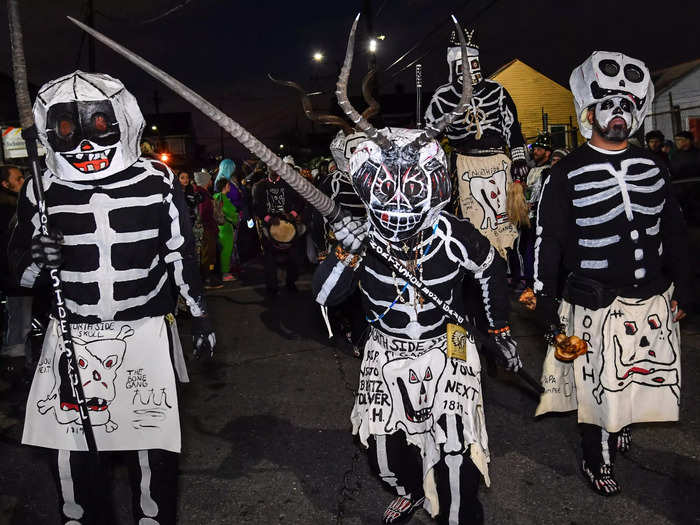
For more than 200 years, the North Side Skull and Bone Gang has signaled the start of Mardi Gras Day, waking the spirits and reminding the city to live well before death.
At dawn, members of the gang don skeleton suits, butcher aprons, and papier-mâché skulls and walk the streets of Tremé in New Orleans. Gripping meat bones and spears, they go door to door, rousing their neighbors with drumbeats and their signature call, "You next!"
The tradition has roots in African spirituality, and is a reminder of peace and harmony. Skeletons are part of the transatlantic culture of the African diaspora, including West African rituals, Caribbean Vodou practices, and Latin American Day of the Dead celebrations.
Popular Right Now
Popular Keywords
Advertisement